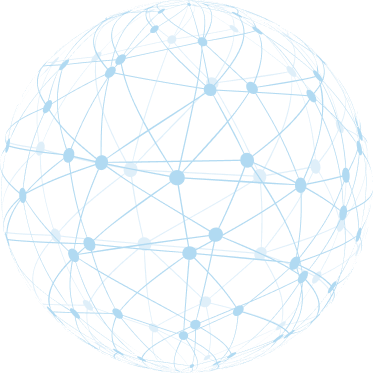The phrase “limited-time offer” is more than a marketing gimmick—it’s a neuroscientific lever. The scarcity effect, rooted deeply in human psychology, activates our brain’s urgency and fear-of-missing-out (FOMO) circuitry. When buyers perceive that a product, service, or opportunity is limited, their decision-making process shifts dramatically.
In this post, we’ll break down the brain science behind scarcity, explore why it works so powerfully, and share practical, ethical ways to apply it to your sales and marketing strategy.
What Is the Scarcity Effect?
The scarcity effect is the cognitive bias that leads people to place a higher value on things that are perceived as rare or in limited supply. When something becomes less available, it becomes more desirable—not because it changed, but because our brain changed how it evaluates it.
This effect is hardwired into our evolutionary biology. Scarcity once signaled a survival threat—if food or shelter was limited, immediate action was necessary. That wiring hasn’t gone away. In today’s world, it influences how we book hotels, buy sneakers, or click “register now” on a webinar.
The Neuroscience of Urgency and Scarcity
Scarcity taps into several neural systems responsible for decision-making, emotional response, and attention:
1. Amygdala: The Threat Detector
The amygdala is responsible for our fight-or-flight response. Scarcity is perceived as a threat of loss, which the brain processes with urgency. The result? The buyer shifts from analytical thinking to instinctive action.
2. Insular Cortex: Discomfort with Uncertainty
The insula registers negative feelings like anxiety or unease. Scarcity introduces uncertainty—“Will this be gone tomorrow?” That discomfort drives quicker decisions to avoid the unpleasant emotion.
3. Dopaminergic System: The Anticipation of Reward
Scarce items often feel exclusive. That anticipation lights up the dopamine reward system, creating a sense of pleasure even before the item is acquired. We crave the win, not just the item.
4. Anterior Cingulate Cortex (ACC): Conflict Monitoring
The ACC lights up when we face competing choices or potential regret. Scarcity intensifies this conflict, which increases the mental weight of inaction—pushing the buyer toward “yes.”
How Scarcity Changes Buyer Behavior
Buyers exposed to scarcity cues:
- Decide Faster
Scarcity compresses the decision window. The fear of missing out leads to shorter evaluation cycles and quicker commitments. - Value the Product More
Multiple studies show people are willing to pay more or assign higher emotional value to scarce goods. - Rationalize Post-Purchase
Because the decision feels urgent, buyers often rationalize the purchase afterward, reinforcing satisfaction and reducing remorse.
Types of Scarcity Cues (and When to Use Them)
1. Time-Based Scarcity
- “Offer expires Friday at midnight.”
- Works best in short sales cycles or limited-time campaigns.
2. Quantity-Based Scarcity
- “Only 7 spots left.”
- Effective in events, consulting programs, or high-ticket offers where capacity is genuinely limited.
3. Access-Based Scarcity
- “Available only to subscribers/members.”
- Taps into the brain’s reward circuitry through exclusivity and perceived insider status.
4. Contextual Scarcity
- “We only work with 10 clients per quarter.”
- Signals high demand and creates trust through perceived selectiveness.
How to Ethically Use the Scarcity Effect
✅ Be Authentic
False scarcity kills trust. Don’t claim “limited time” if the offer will still be there next week. The amygdala responds even more negatively when people feel deceived.
✅ Pair Scarcity with Value
The brain needs a reason to act. Pair urgency with real, tangible value—like a bonus, discount, or exclusive feature.
✅ Reinforce Scarcity with Social Proof
Use testimonials or real-time data like “12 people just viewed this” to amplify urgency without pressure.
✅ Provide Clarity and Control
Help the brain resolve uncertainty. Make deadlines, limits, and next steps crystal clear to lower cognitive load and increase confidence in action.
Scarcity in Action: Sales and Marketing Examples
Use Case | Scarcity Trigger | Why It Works |
Webinar Registration | “Only 100 seats available. Reserve yours now.” | Triggers urgency + exclusivity = higher sign-up rates |
Consulting Packages | “Spots are limited to 5 clients per quarter.” | Builds perceived value and status of working with you |
Ecommerce | “Only 2 left in stock” | Simple but powerful—triggers immediate action |
Software Trials | “Get bonus features if you sign up before [date]” | Combines value and time pressure for higher conversion |
The Role of Scarcity in B2B Sales
While scarcity is often used in consumer marketing, it’s just as effective—and often underutilized—in B2B sales. For example:
- A limited pilot program can create urgency for enterprise buyers.
- Capacity-based scarcity (e.g., “We’re onboarding only 3 clients this month”) builds perceived exclusivity.
- Early access or pre-launch incentives can guide hesitant buyers over the finish line.
In high-consideration B2B environments, ethical, transparent scarcity signals that your time and resources are valuable—building both trust and urgency.
Tracking the Scarcity Effect
To see whether your scarcity tactics are working, monitor these metrics:
Metric | What It Reveals |
Click-Through Rate (CTR) | Indicates whether scarcity copy drives attention |
Conversion Rate | Reflects urgency effectiveness |
Time-to-Decision | Shorter sales cycles suggest urgency is activated |
Abandonment Rate | High drop-off may signal unclear or inauthentic scarcity |
A/B test your offers with and without scarcity language to refine your strategy over time.
Final Thoughts
Scarcity works because our brains are wired to avoid loss, seek reward, and reduce uncertainty—all at lightning speed. When applied authentically, the scarcity effect doesn’t manipulate; it motivates. It helps buyers make faster, more confident decisions in an overwhelming world of endless options.
If you want to increase urgency without sacrificing trust, blend scarcity with empathy and clarity. Make the offer real, the deadline firm, and the value clear—and your buyer’s brain will do the rest.
Try this: In your next campaign or conversation, introduce one genuine scarcity element—and watch how it shifts urgency, engagement, and decision speed.





